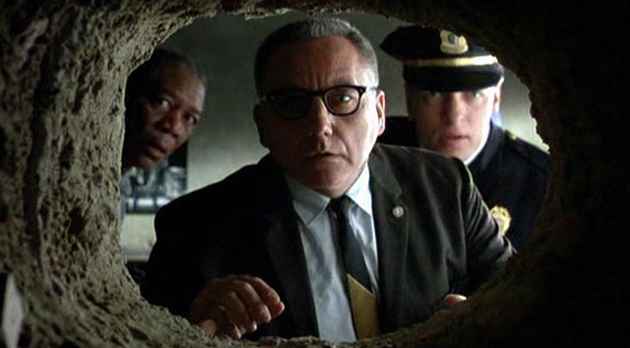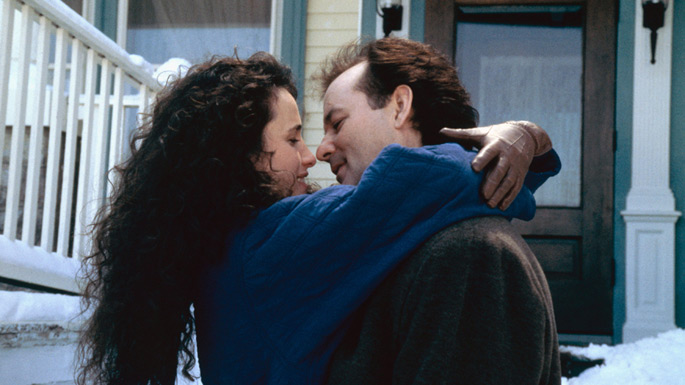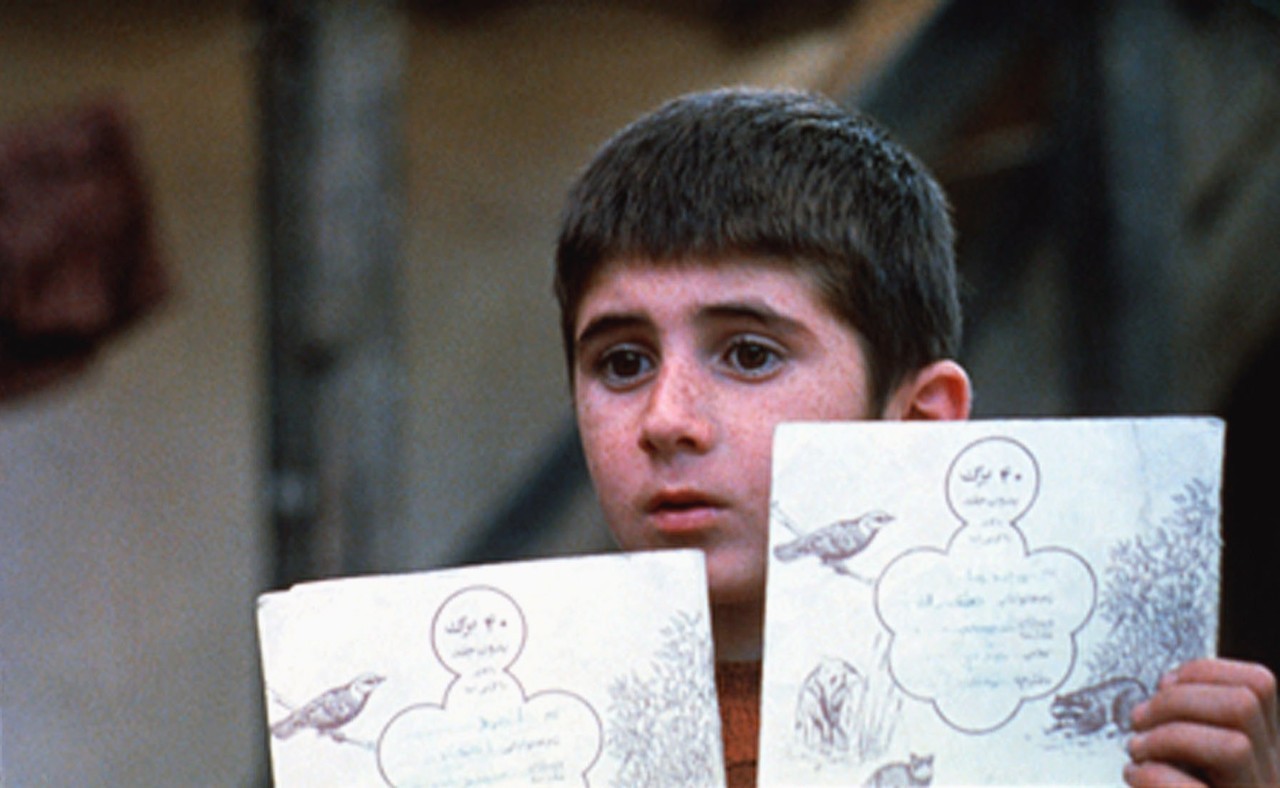5. It’s a Wonderful Life (1946)

There are countless reasons why “It’s a Wonderful Life” is one of the most unique films in cinema history. This Christmas classic, directed by Frank Capra, keeps reminding us of the sanctity of family and friendship.
Overwhelming events bring businessman George Bailey to the brink of suicide. As George swings on the edge of the bridge, the guardian angel Clarence appears and decides to play with George a small game to discourage him from thinking of suicide.
“It’s a Wonderful Life” emphasizes how many lives we can influence as an honest, honorable, and helpful person. And those who sacrifice their lives for other people to live in better conditions are true honorable personalities.
In the end, after seeing the alternate reality where he had never been born, George realizes how many people he helped with his goodwill and becomes aware of the value of his life. Thanks to his guardian angel, now we all know that “no man is a failure who has friends.”
4. The Florida Project (2017)

In “The Florida Project,” we follow the lives of desperate people living right next to Walt Disney World in Florida through a mother-daughter relationship.
Director Sean Baker pulls out the sleek veil of the American dream and shows the solid truth hidden beneath. Another positive point is that although Baker has plenty of opportunities, he avoids the exploitation of emotions, especially through Moonee. We catch those shocking moments in the film’s natural course.
While the two separate worlds, which are very close to each other but create a distinct contrast, are emphasized with the exquisite cinematography throughout the film, as the end approaches, the camera starts to breathe. In the finale, it leads to a massive feeling of freedom which Baker already signaled.
Needing money for food and motel bills, Moonee’s mother Halley begins soliciting sex work online. When Florida Department of Children and Families (DCF) arrives to investigate Halley, they decide to take Moonee into foster care pending investigation. With shocking despair, Moonee finds Jancey, takes her hand as the two run away to the “better place.”
3. The Shawshank Redemption (1994)

The finale of “The Shawshank Redemption” is probably one of the most famous endings in cinema history. There are many factors that make this finale special, which arouse many emotions in the audience leading to catharsis.
Most prison films are highly prone to identification between the characters and the audience. Perhaps what strengthens the sense of empathy in the audience is the pity of the characters.
Andy Dufresne is a young and successful banker. He is tried for the murder of his wife and is sentenced to life imprisonment. Despite the beating, tortures, and rape in Shawshank Prison, Andy is still committed to life and remains optimistic. This attitude also affects those around him. Andy makes a special friend who will share his efforts: Red.
Throughout the film, Andy’s calm, determined and admirable personality, his relationship with Red and other prisoners, the skillfully written side characters’ stories come together, and lead to one of the most memorable finales in cinema history.
After 19 years and several cunning plans, Andy escapes Shawshank via a hole dug in the cell wall, and crawls through the prison’s sewage system. Red finally ends up being paroled and immediately breaks the terms of that by travelling to Mexico. The two men finally reunite on a beach and happily embrace each other and their freedom.
2. Groundhog Day (1993)

When we consider the warm atmosphere, one of the best screenplays ever, Bill Murray’s great performance, and its flawless finale, it is not surprising that “Groundhog Day” has become one of the most inspiring classics today.
Phil Connors is a famous weather announcer. This grumpy man is sent to one of the rural towns of Pennsylvania, one he never likes, for its Groundhog Day events.
Although he is disgusted by the town and its humble people, he has to endure this life for a day. But when a sudden blizzard shuts down all transport routes, Phil is left with his unfortunate fate. When he wakes up the next morning, he notices that he is caught in a time loop. He has to live that day again.
After spending several loops trying and failing to court Rita, he becomes depressed and decides to find a solution to end it. Phil begins to use his knowledge of the day’s events to improve himself. He learns how to play the piano, sculpt ice, and speak Italian…
During one loop, Phil enthusiastically reports the Groundhog Day festivities and amazes Rita. Impressing her with his apparent overnight transformation, Phil finally says he loves her. They retire together to Phil’s lodgings. Phil wakes up again, but finds Rita is still in bed with him; he has escaped the time loop. And they decide to live together in Punxsutawney.
1. Where is My Friend’s Home? (1987)

Abbas Kiarostami’s unique cinema, which takes its power from İranian poetry, miniature tradition, and the purity of nature, makes him one of the leading figures of this art form.
One day, Ahmed accidentally takes homework from his friend to his house. If this assignment does not come back as soon as possible, the teacher will give him a very bad grade. For this reason, Ahmed, who doesn’t know exactly where his friend lives, will set out immediately to bring him his homework. Ahmed’s seemingly insignificant journey will give many clues about the face of small towns in Iran.
Whilst Ahmet struggles with the simple but persistently repeated obstacles of a simple life, Kiarostami seeks the poetry of trees, wind, and derelict sounds.
Kiarostami divulges how we should – and should not – look to children, childhood, and the world that surrounds them in the purest way.
Although Ahmet tries to find his friend’s home all day, he can’t succeed. And finally he ends up doing the homework for his friend. Next day, he gets the homework to class and it is deemed excellent by the teacher. In the notebook we see a flower representing the whole purpose of the film – the beauty of purity and simplicity.
Maybe the fascination of the finale comes from this; even though we were once a child, we realize how hard it is to reach the purity of that world in modern times. But this great ending, which pushes us to think about conscience, compassion, honesty and friendship, makes us notice that we must embrace today’s life and its beauty, because that’s all we have.